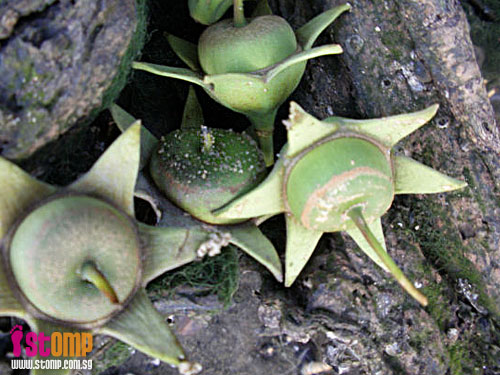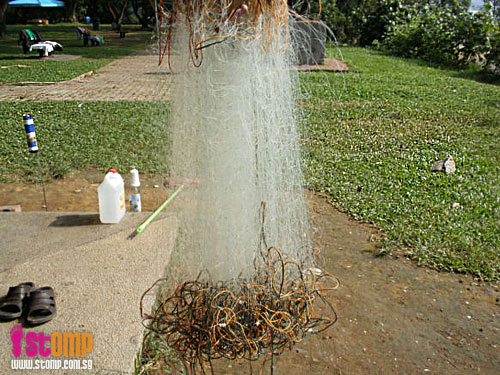
STOMPer Marco Polo wants to share these pictures he took at Kranji Reservoir Park with fellow STOMPers.
In an email to STOMP today (May 28), the STOMPer says:
"These pictures were taken at Kranji Reservoir Park.
"When the tide receded, many marine creatures were left on the beach, including this horseshoe crab. This can be seen in the main picture.
"This crab is a scavenger and fees mainly on bivalves. The tail is used to right itself up when overturned. Although it is harmless, it can move fast when pursued by other predators.
"The crab also feeds on worms and dead animals. Sea water is full of bacteria and the horseshoe crab is threatened with infection. It has no antibodies to fight infection. However, the horseshoe crab does contain a number of compounds that will bind to and inactivate bacteria, fungi and viruses. The horseshoe crab uses endotoxin as a signal for wound occurrence and as an effective defence against infection.
"Some clams were left on the beach when the tide receded. You can see a swarm of blow flies feeding on the fleshy clams.
"The green coloured fruits of the mangrove tree were left near the base of the trunk when the tide went down. The fruit is crowned by the persistent sepals. The tree is about 20m tall and the flowers have white petals.
"In another picture, you can also see a man using a cage to catch crabs at the beach which faces the Johor Straits.
"Some avid anglers cycle here on the weekends to enjoy a day of fishing and picnicking. They bring large nets to catch the bigger fish."




